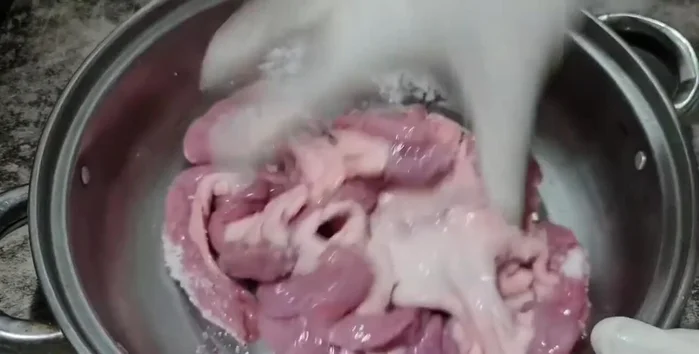Pig intestines, often overlooked, offer a surprisingly delicious and versatile culinary experience when prepared correctly. From the rich, savory flavors of chitterlings to the unique textures found in various regional dishes, mastering the cleaning process unlocks a world of gastronomic possibilities. Many shy away from this ingredient due to its perceived difficulty, but with the right approach, cleaning pig intestines is manageable and even rewarding. The unique flavor profile and cost-effectiveness make it a worthwhile ingredient for adventurous cooks.
This guide will walk you through a straightforward, step-by-step process of cleaning pig intestines, ensuring they are safe and ready for your chosen recipe. We'll cover everything from initial preparation to the final rinsing, providing clear instructions and helpful tips to achieve perfectly cleaned intestines every time. Ready to unlock the potential of this often-underutilized ingredient? Let's get started!
Tools Needed
- Bowl
- Water source
Ingredients
- Pig intestines: 1 1/2 bunches
- Salt: 1 heaped tablespoon
- Water
- Vinegar: 1/2
- Tapioca flour: 1 ladle
Step-by-Step Instructions
Step 1. Initial Cleaning and Salting
- Wash the intestines thoroughly.
- Add salt and knead the intestines, ensuring the salt dissolves. Keep rubbing the salt into the intestines.
- Rinse the intestines thoroughly with water to remove the salt. Repeat this washing process twice.



Step 2. Vinegar and Flour Treatment
- Add half a portion of vinegar and one ladle of tapioca flour. Knead to combine thoroughly.
- Let the mixture rest for 5 minutes.


Step 3. Final Rinse
- Wash the intestines three times with water to remove the flour. You can wash more if needed until the water runs clear.

Read more: Thai Mussel Pie Tee: Michelin-Starred Amuse-Bouche Recipe
Tips
- This cleaning method effectively eliminates odors.
- Thoroughly rinsing removes salt and flour residues.
- Vinegar and tapioca flour help eliminate fishy or unpleasant smells.
Nutrition
- N/A
FAQs
1. How do I know if the intestines are clean enough?
The intestines should be free of any visible dirt, fecal matter, and unpleasant odor. A thorough rinsing with water and a slight scrubbing should remove most impurities. If you're still unsure, repeat the cleaning process.
2. Can I freeze cleaned pig intestines?
Yes, you can! Once cleaned and rinsed thoroughly, you can freeze the intestines in airtight bags or containers. This will extend their shelf life significantly.
With a little patience and these simple steps, you've successfully cleaned pig intestines, opening up a world of culinary possibilities. Now you're ready to confidently experiment with diverse recipes, unlocking unique flavors and textures. Enjoy the rewarding experience of transforming this often-overlooked ingredient into a delicious centerpiece of your next meal!
